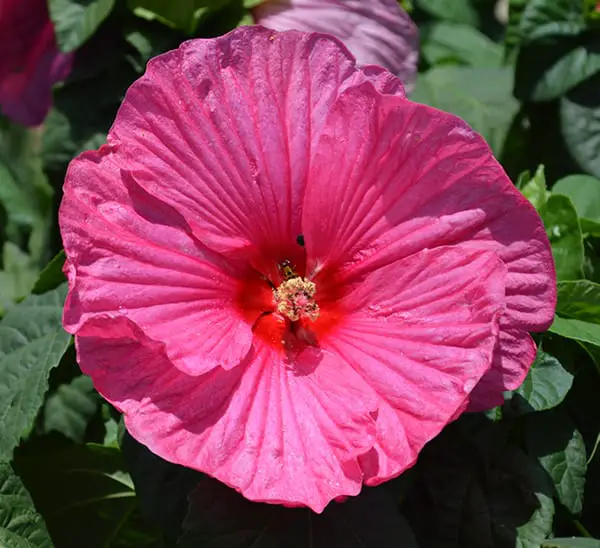Hibiscus is one of the most beautiful flowers that you can find. They are known for their large, colorful blooms and for their ability to come back every spring. If you are wondering when hibiscus comes back, then you have come to the right place. In this article, we will take a look at when these lovely flowers return each year.

So, When Do Hibiscus Come Back?
It’s that time of year again! The days are getting longer, the weather is getting warmer, and the flowers are starting to bloom. One of our favorite flowers, the hibiscus, is starting to make its appearance once again. We love hibiscus for its vibrant colors and beautiful blooms, and we can’t wait to see them popping up all over our yards and gardens.
If you’re like us and can’t wait for the hibiscus to come back, you might be wondering, “when does hibiscus come back?” The answer is that they typically start blooming in late spring or early summer. So if you’re seeing them in your garden now, that’s a good sign that summer is on its way!
Of course, every plant is different, and there can be a lot of variation from one hibiscus to the next. Some varieties will bloom earlier than others, and some may even bloom multiple times throughout the season. But in general, you can expect to see hibiscus blooming from late spring through early summer.
Types of Hibiscus
There are many different types of Hibiscus, and they come in a wide variety of colors and sizes. Hibiscus are native to tropical and subtropical regions around the world, and they are grown as ornamental plants in many different climates.
The most common type of Hibiscus is Hibiscus Rosa-Sinensis, which is native to China and India. This plant has large, showy flowers that can be pink, red, orange, or white. The Hibiscus Rosa-Sinensis is the national flower of Malaysia, and it is also the state flower of Hawaii. Other popular types of Hibiscus include the Hibiscus Syriacus, Hibiscus Sabdariffa, and Hibiscus Mutabilis.
The Hibiscus Syriacus is native to the Mediterranean region, and it has small, white flowers. The Hibiscus Sabdariffa is native to Africa, and it has large, red flowers. The Hibiscus Mutabilis is native to South America, and it has small, yellow flowers. Hibiscus are generally easy to grow, and they can be propagated by seed, cuttings, or division.
They prefer full sun and well-drained soil, and they can be susceptible to pests and diseases. If you are looking for a beautiful, tropical plant to add to your garden, consider growing Hibiscus. There are many different types to choose from, and they come in a wide variety of colors and sizes. With proper care, Hibiscus can thrive in almost any climate.
Tips For Growing Hibiscus For The Best Bloom
Hibiscus is a beautiful and popular flower that is often seen in gardens. They come in many colors, and their large, showy flowers make them a favorite among gardeners. Hibiscus is not only a beautiful flower, but it is also a very easy plant to grow. With a little care, you can have healthy and vibrant hibiscus in your garden.
Here are a few tips for growing Hibiscus:
Choose the right location
Hibiscus does best in full sun to partial shade. They need at least six hours of sunlight each day. If you live in an area with hot summers, it is best to plant your hibiscus in a location that gets some afternoon shade.
Prepare the soil
Hibiscus prefers well-drained, sandy soil. If your soil is heavy or clay-like, you can add some organic matter to help improve the drainage.
Water regularly
Hibiscus needs to be watered regularly, especially during the hot summer months. They should be watered deeply and allowed to dry out between waterings.
Fertilize regularly
Hibiscus benefits from regular fertilization. Use a balanced fertilizer that is formulated for flowers. Apply the fertilizer according to the package directions.
Deadhead spent flowers
Deadheading or removing spent flowers will encourage your hibiscus to produce more flowers.
Protect from frost
Hibiscus is a tropical plant and is not frost-hardy. If you live in an area where frost is a possibility, it is best to plant your hibiscus in a pot that can be brought indoors during the winter months.
With a little care, you can enjoy beautiful hibiscus flowers all season long.
Why Hibiscus Is a Great Addition To Any Garden
There are many reasons why hibiscus is a great addition to any garden. First of all, hibiscus is a very beautiful plant. The large, showy flowers are sure to add a touch of beauty to any garden.
Secondly, hibiscus is a very easy plant to grow. It is very tolerant of different soil types and climates and does not require a lot of care. Thirdly, hibiscus is a very versatile plant. It can be used as a hedge, as an accent plant, or even as a ground cover.
Fourth, hibiscus is a very durable plant. It can withstand high winds and heavy rains. And last but not least, hibiscus is a very low-maintenance plant. It does not require a lot of fertilization or pruning.